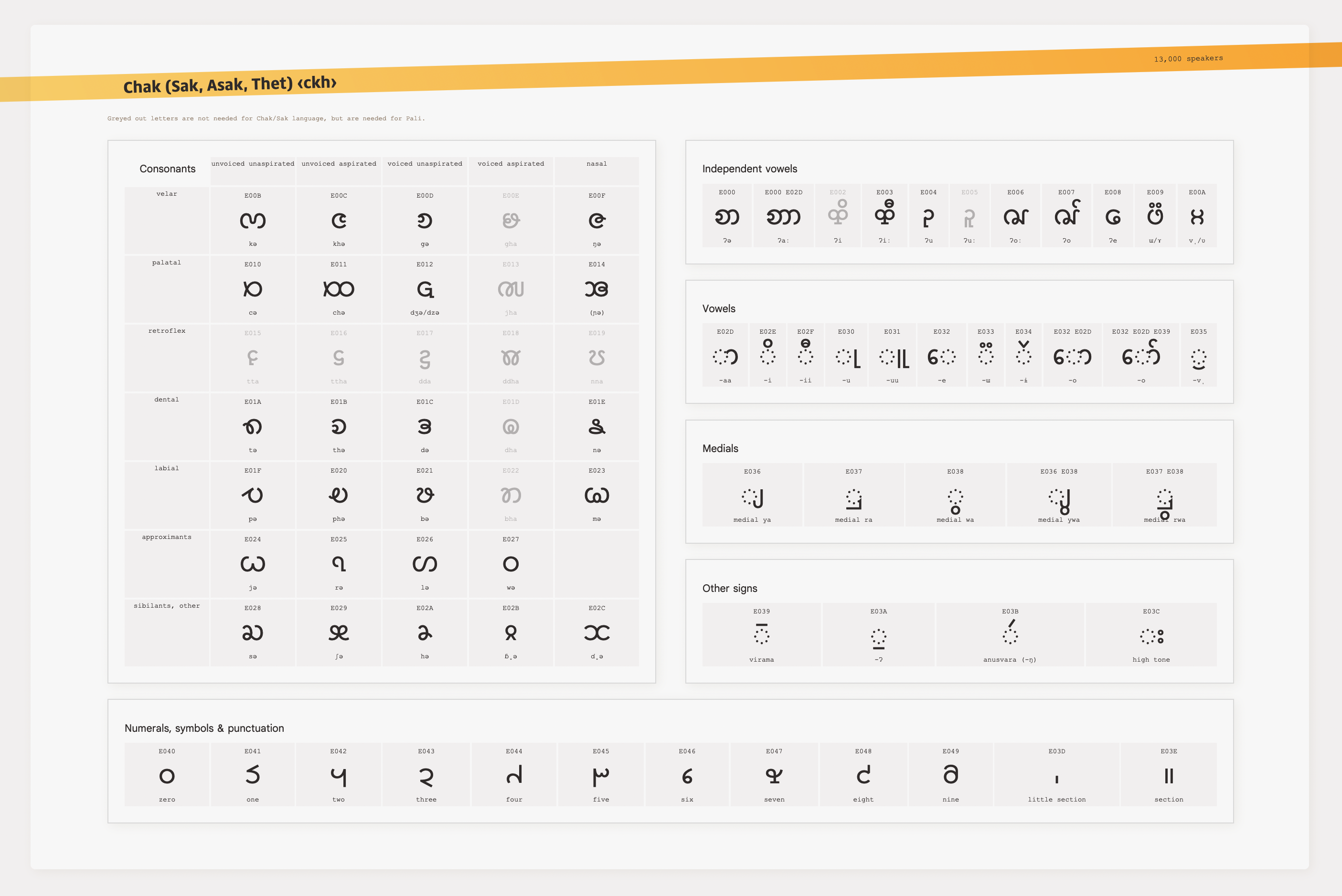Very initial prototype font for Cak/Sak/Thet/Asak language (ISO 639:3 ckh) spoken in Bangladesh and Myanmar.
This script is used by the ~3000 Cak or Chak (চাক) people of Bangladesh's Chittagong Hill Tracts, and the ~1000 Sak (သက်) people of Burma's Rakhaing State. Burmese pronunciation of သက် is [θet] and can be romanised as ‘Thet’. The people call themselves ‘Asak’.
Sangdong (2012), quoting Maggard (2007) notes the Chak people are distinct from the Chakma, whereas he recognises a close linguistic connection between Sak/Chak and the Kadu (ကတူ) language (ISO 639:3 zkd) spoken by 40,000 people in Burma’s Sagaing Region. There is also evidence of another script for Kadu.
Cak language traditionally had no script of its own, and speakers were obliged to use Bangla or Burmese script, which don’t have all the necessary letters. Addressing this problem, Mong Mong Cak devised a script and his younger brother Ong Khyaing Cak created a digital font that has been used in numerous school textbooks. It is on his font that this current project is largely based.
Mong Mong Cak's version of the script is undocumented in English language: in the resources consulted, some characters are missing their sound values. The script may also be incomplete: some sound values are missing a character. Huziwara (2019) proposes some amendments to the alphabet to improve consistent spelling and permit greater correspondance between phonemes and graphemes.
This font is currently encoded using Unicode PUA codepoints E000-E03E.
See the draft Unicode proposal (updated 23 April 2023)

